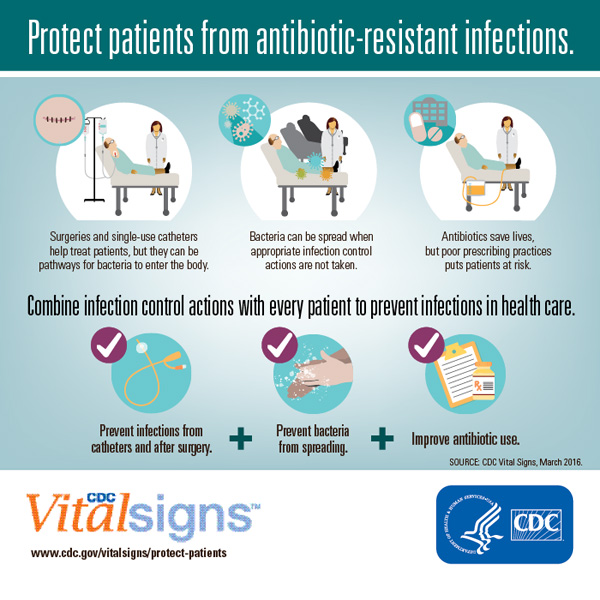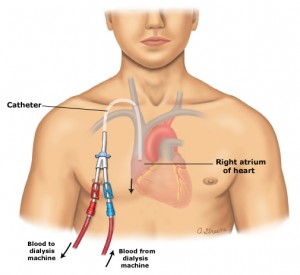 Although the United States is improving on preventing hospital infections and healthcare-associated infections, greater diligence is needed – particularly in fighting antibiotic-resistant bacteria. Far too many patients are getting antibiotic resistant infections from health care providers including hospitals, doctors and nurses. As well as HMOs such as Kaiser Permanente.
Although the United States is improving on preventing hospital infections and healthcare-associated infections, greater diligence is needed – particularly in fighting antibiotic-resistant bacteria. Far too many patients are getting antibiotic resistant infections from health care providers including hospitals, doctors and nurses. As well as HMOs such as Kaiser Permanente.
The Centers for Disease Control and Prevention’s latest Vital Signs report urges healthcare workers to use a combination of infection control recommendations to better protect patients from these infections.
The Centers for Disease Control and Prevention Director Tom Frieden, M.D., M.P.H. said according to a recent posting that “New data show that far too many patients are getting infected with dangerous, drug-resistant bacteria in healthcare settings. . . Doctors and healthcare facilities have the power to protect patients – no one should get sick while trying to get well.”
While hospitalized antibiotic-resistant bacteria threaten patients while they are being treated in healthcare facilities for other conditions, often post surgery. These infections can lead to sepsis and/or death.
In acute care hospitals, catheter- and surgery-related HAIs can be caused by several antibiotic-resistant bacteria. In long-term acute care hospitals, which treat patients who are generally very sick and stay, on average, more than 25 days the rate of infection is greater.
The six antibiotic-resistant threats examined are:
Carbapenem-resistant Enterobacteriaceae (CRE)
ESBL-producing Enterobacteriaceae (extended-spectrum ß-lactamases)
Methicillin-resistant Staphylococcus aureus (MRSA)
Multidrug-resistant Acinetobacter
Multidrug-resistant Pseudomonas aeruginosa
Vancomycin-resistant Enterococcus (VRE)
The most common hospital acquired infections according to the C DC are in central line-associated bloodstream infections; surgical site infections; catheter-associated urinary tract infections. A central line is a catheter that doctors place in a large vein in the neck, chest, or groin to give medication. Infections occur when bacteria or viruses enter bloodstream through the central line.
The most common type of bacteria responsible for infections in hospitals is Clostridium difficile (C. difficile). C. difficile caused almost half a million infections in the United States in 2011 alone.
Congress has recognized the urgent need to combat antibiotic resistance. In fiscal year 2016, Congress appropriated $160 million in new funding for CDC to implement its activities listed in the National Action Plan for Combating Antibiotic-resistant Bacteria. With this funding, CDC will fight the spread of antibiotic resistance by: accelerating outbreak detection and prevention in every state; enhancing tracking of resistance mechanisms and resistant infections; supporting innovative research to address current gaps in knowledge; and improving antibiotic use.
If you or a loved one has injured as a result of medical care you received you may have a claim for medical negligence. You should contact a medical malpractice / personal injury attorney to review your matter.
As an experienced Pasadena medical malpractice / personal injury attorney, I can assist you should you have any questions. Please feel free to call Richard M. Katz, Esq., am right here to address your concerns and offer you assistance. For a complimentary assessment, call me at 626-796-6333 or contact me through my website /.



